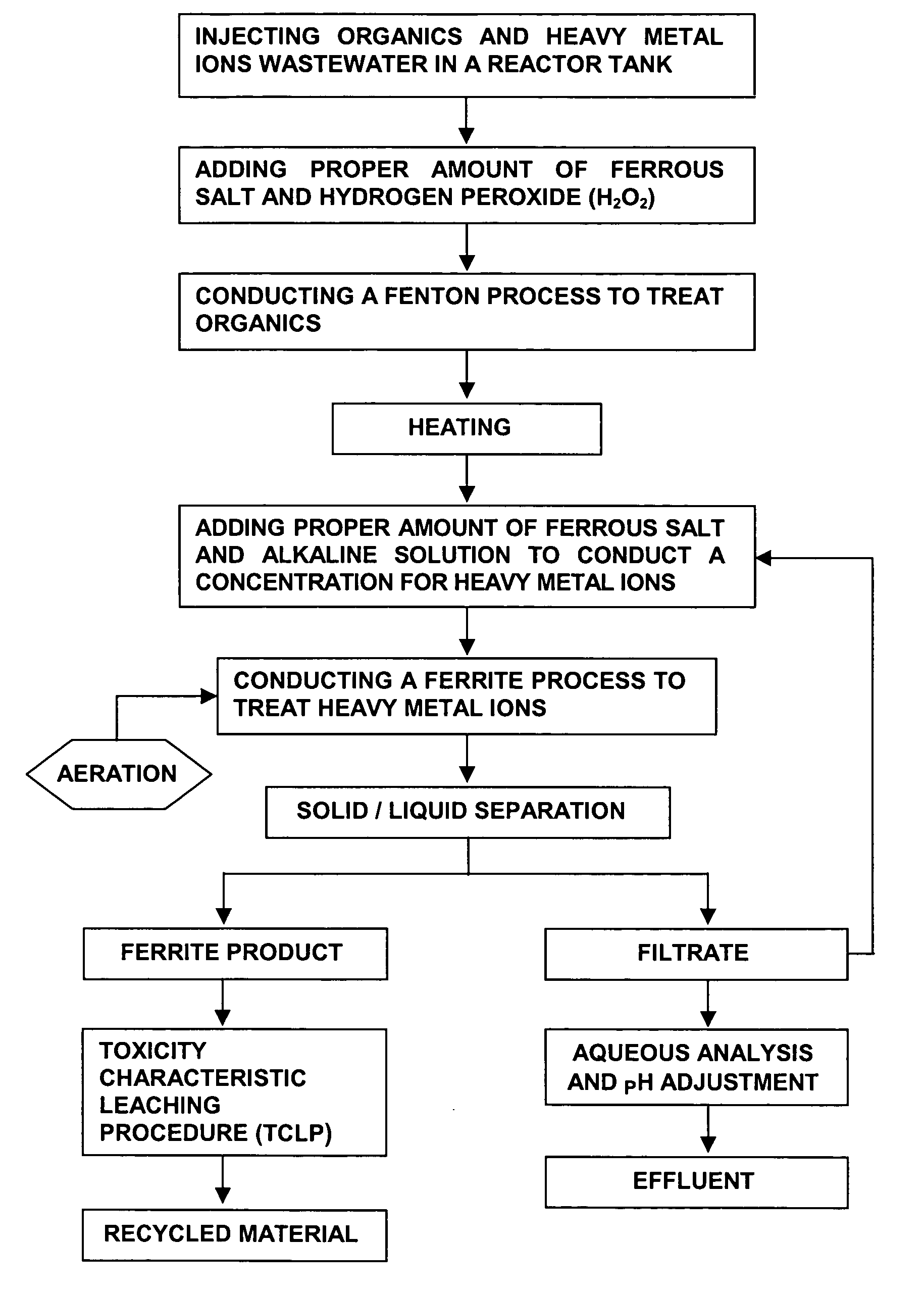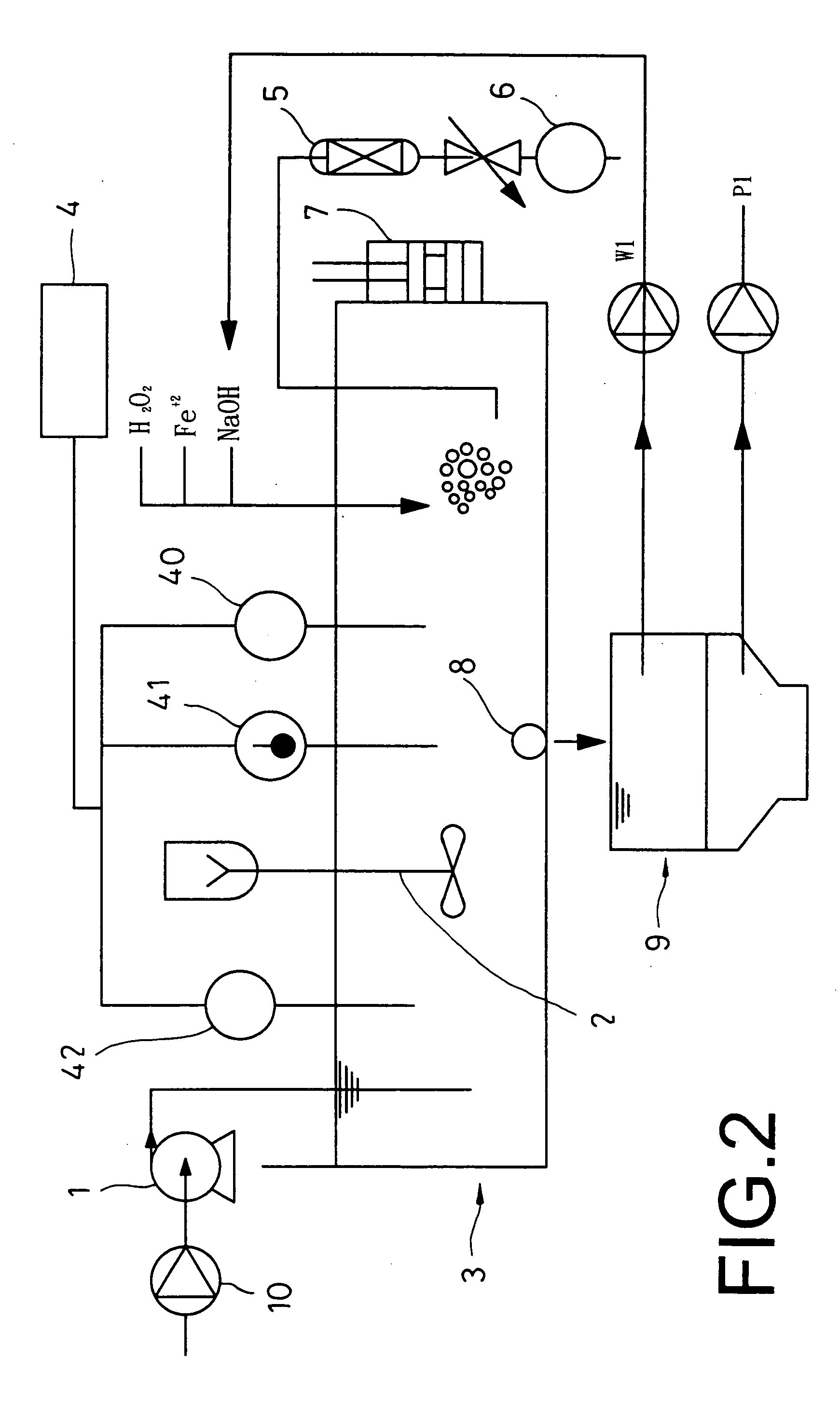Integrated technology in sequential treatment of organics and heavy metal ions wastewater
a technology of organics and heavy metal ions, applied in the direction of treatment water, separation process, filtration separation, etc., can solve the problems of large amount of heavy metal sludge generated per year, serious secondary pollution needed to be solved further, and large amount of organic waste sludge generated. , to achieve the effect of reducing the effect of organics, enhancing the quality of ferrite products, and reducing the amount of iron sludg
- Summary
- Abstract
- Description
- Claims
- Application Information
AI Technical Summary
Benefits of technology
Problems solved by technology
Method used
Image
Examples
Embodiment Construction
[0040] The present invention utilizes one single reactor tank to sequentially treat organics and heavy metal ions contained in wastewater by adjusting a molar ratio of hydrogen peroxide (H2O2):ferrous salt to firstly treat the organics by a fenton process under conditions of pH ranging from 2 to 5 and temperature ranging from 20° C. to 100° C., and then treat the heavy metal ions by a ferrite process under conditions of pH ranging from 8 to 12 and temperature ranging from 20° C. to 100° C.
[0041] In the fenton process, ferrous ions (Fe2+) reacts with hydrogen peroxide (H2O2) to yield a hydroxyl radical, by-which an organic matter (R) is oxidized by the hydroxyl radical according to the following reactions:
Fe2++H2O2→Fe3++.OH+OH− (1)
.OH+R+H2O→.R (2)
.OH+R→.ROH (3)
Fe3++.R→Fe2++products (4)
2.R→R.R (5)
Fe2++.R+H+→Fe3++RH (6)
[0042] In the ferrite process, sodium hydroxide (NaOH) is added into an aqueous solution containing ferrous ions (Fe2+) and M2+ to generate green nonm...
PUM
| Property | Measurement | Unit |
|---|---|---|
| temperature | aaaaa | aaaaa |
| molar ratio | aaaaa | aaaaa |
| temperature | aaaaa | aaaaa |
Abstract
Description
Claims
Application Information
 Login to View More
Login to View More - R&D
- Intellectual Property
- Life Sciences
- Materials
- Tech Scout
- Unparalleled Data Quality
- Higher Quality Content
- 60% Fewer Hallucinations
Browse by: Latest US Patents, China's latest patents, Technical Efficacy Thesaurus, Application Domain, Technology Topic, Popular Technical Reports.
© 2025 PatSnap. All rights reserved.Legal|Privacy policy|Modern Slavery Act Transparency Statement|Sitemap|About US| Contact US: help@patsnap.com



